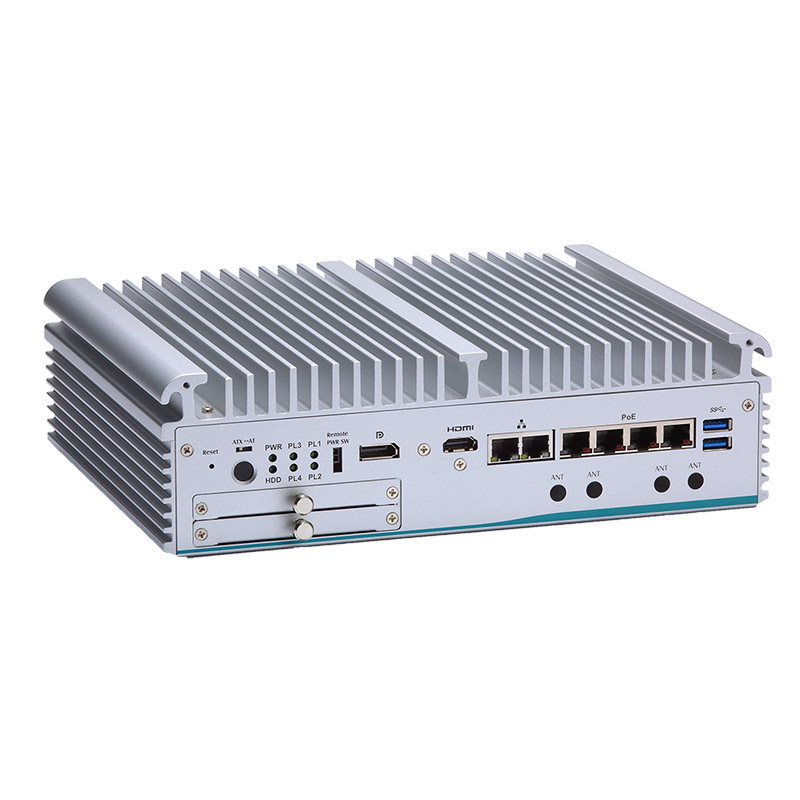|
Machine vision can be the key contributing factor for successful machine-to-machine (M2M) communications, quality control applications and machine and deep learning. For quality control, it supports accurate detection of measurements, inspection of parts, the guidance of assembly robots and correct ID reading, all of which can be done real-time. Machine vision can also enhance machine learning process from delivering the collections of visual data and facilitate (M2M) communications.
An embedded system for machine vision
The machine vision-based embedded systems address critical industrial IoT needs, including monitoring of various conditions during the production process. For example, machine vision is used to detect defects and anomalies during the production process in a factory environment. The results are better product quality, control as well as productivity improvements. It is also used for predictive maintenance and helps facilitate the machine learning process.
 Take, for instance, eBOX671-521-FL, a fanless embedded system that provides reliable high-speed connectivity for on-premise and cloud servers to host industrial machine vision systems on the fly. The embedded system is purpose-built for smart factory applications. It offers abundant I/O connectivity options for multi-camera imaging applications as well as display interfaces including DVI-I, HDMI and DisplayPort. Take, for instance, eBOX671-521-FL, a fanless embedded system that provides reliable high-speed connectivity for on-premise and cloud servers to host industrial machine vision systems on the fly. The embedded system is purpose-built for smart factory applications. It offers abundant I/O connectivity options for multi-camera imaging applications as well as display interfaces including DVI-I, HDMI and DisplayPort.
The industrial-grade embedded system also features enhanced storage and graphics capabilities to ensure support for a variety of cameras, lighting and controllers catering to various inspection requirements. The eBOX671-521-FL embedded system, for example, features ECC memory supported by an optional Intel® C246 chipset to harness the latest graphics technologies.
More importantly, this robust embedded computer plays a critical role in facilitating high-speed image acquisition and processing. The platform is also crucial in machine vision embedded systems managing robots due to safety concerns and the risk of collision with humans.
Axiomtek’s eBOX671-521-FL is scalable. It offers choices of 8th Generation Intel® Core™ i7/i5/i3 and Celeron® processors that provide ample capacity for transmitting multiple and simultaneous data collection streams. The processors offer a rich visual experience with the latest 4K Ultra HD graphics improvements.
The machine learning designs also mandate reliable high-speed connectivity with sensors and on-premise servers or cloud computers. Here, PoE connectivity offers a highly suitable solution to connecting sensors and cameras and communicate acquired data without finding additional sources of power and complicating the implementation of sensors/actuators to the edge server and machine-to-machine or machine-to-server connectivity and communications. PoE connectivity significantly lowers the networking cost by consolidating the back-up power and reduces the integration complexity by transporting both data and power on a single Ethernet cable.
The eBOX671-521-FL offers four- or eight-channel gigabit PoE onboard. The PoE ports are critical in supplying power to facilitate continuous camera connections in machine vision applications such as automated optical inspection (AOI). PoE switches can add additional power source for applications that require more cameras.
The eBOX671-521-FL, a robust edge microserver for digital twin technology
A high performance embedded system is required to make the digital twin concept a reality. High processing power, ample system memory and hard drive space, flexible I/O interfaces and great connectivity options are some of the examples of why a reliable and feature-rich edge microserver is the key to successful deployment of the digital twin technology. To simulate manufacturing assets, processes, people and physical objects in real time; choices of CPUs; its capabilities; connectivity and communications interfaces between sensor-to-sensor and sensor-to-edge processors as well as protocol compatibility are critical factors driven by the hardware choice.
Gateway device for IoT applications
A.jpg) xiomtek also offers embedded IoT gateway platforms like ICO300-MI targeted at industrial applications such as smart factory automation, smart energy, facility monitoring systems and more. The ICO300-MI is based on Intel® Gateway Technology and has been upgraded with Wind River Intelligent Device Platform XT v3.1. It provides enterprise-grade security and intelligent manageability features for industrial automation designs. But more importantly, it simplifies the development process with an application-ready IoT gateway platform. xiomtek also offers embedded IoT gateway platforms like ICO300-MI targeted at industrial applications such as smart factory automation, smart energy, facility monitoring systems and more. The ICO300-MI is based on Intel® Gateway Technology and has been upgraded with Wind River Intelligent Device Platform XT v3.1. It provides enterprise-grade security and intelligent manageability features for industrial automation designs. But more importantly, it simplifies the development process with an application-ready IoT gateway platform.
The IoT gateway platform features low power Intel® Atom™ processor, wireless connectivity, rich expansions and ultra-light-weight and compact design. The abundant processing and memory capacity at lower power consumption allows ICO300-MI to efficiently transfer the captured data from the physical world to the virtual world in digital twin, AI and machine vision applications.
The hardware choice: the critical IoT building blocks
Many new trends in manufacturing and factory automation may rely upon software to make them happen. However, they cannot become a reality without the right hardware selection. The embedded systems like eBOX671-521-FL and ICO300-MI have been developed from the ground up to cater to design requirements for applications such as those mentioned for smart manufacturing, IoT edge-processing and industrial IoT analytics. They facilitate ample computing power for AI offshoots such as machine learning and newcomers like digital twins as well as ensure dependable and secured connectivity and communications from edge to cloud/on-site server.
|

